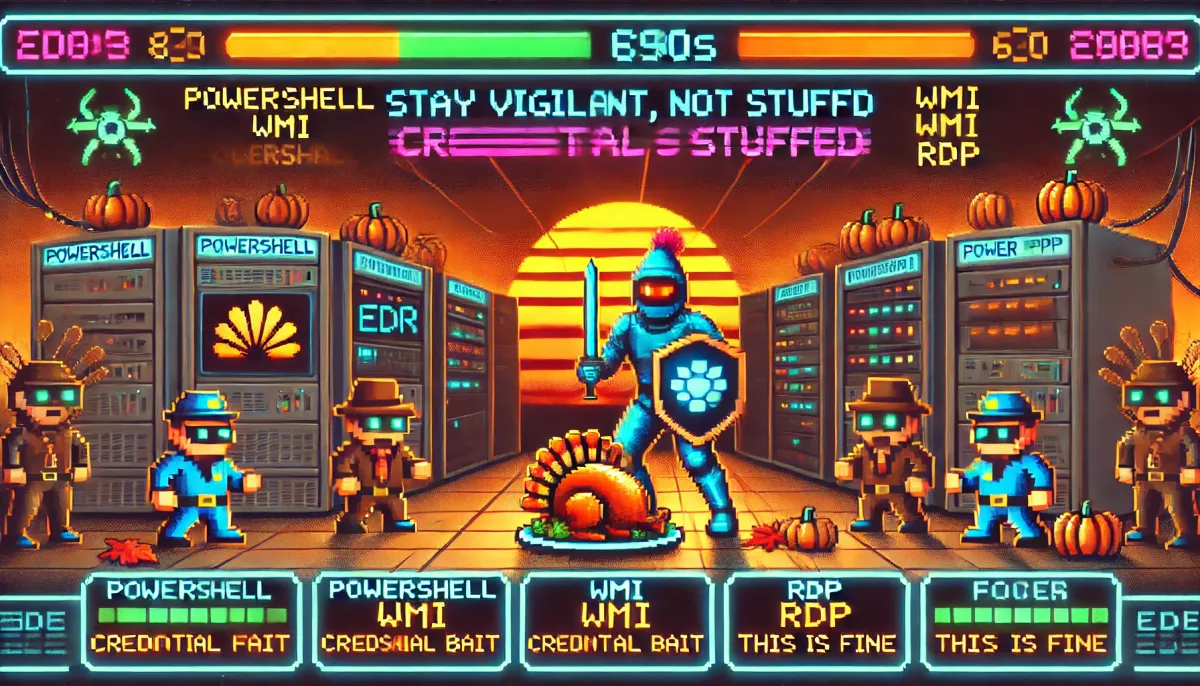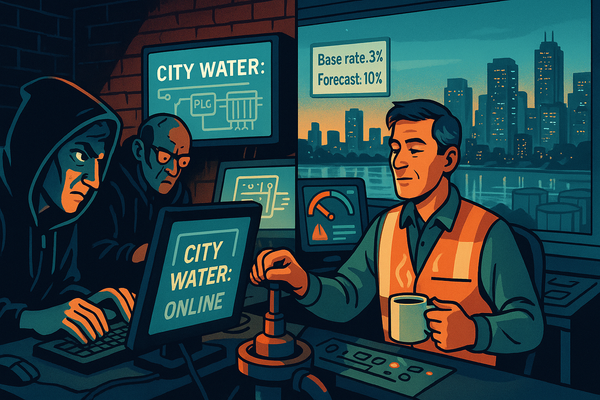Threat Hunting Guide for Typhoon Threat Actors: A Comprehensive Handbook for Operations Teams
Typhoon actors employ "living-off-the-land" (LOTL) techniques, leveraging legitimate system tools like PowerShell, Windows Management Instrumentation (WMI), and Remote Desktop Protocol (RDP) for malicious purposes.

TL;DR
- Sophisticated TTPs: Typhoon threat actors use advanced TTPs, including Google Sheets for C2 and Cloudflare Tunnels for malware staging, making detection challenging.
- Targeted Sectors: The group primarily targets aerospace, chemicals, insurance, and manufacturing sectors, focusing on intelligence gathering.
- Spear-Phishing Campaigns: Their campaigns often involve spear-phishing emails impersonating government agencies to deliver custom malware.
- Custom Malware: The Voldemort backdoor, used by Typhoon actors, is capable of information gathering and loading additional payloads.
- Evolving Techniques: The group's TTPs continue to evolve, incorporating both common and novel methods to evade detection.
- Use of Legitimate Services: Typhoon actors leverage legitimate services like Google Sheets and Cloudflare Tunnels for malicious purposes.
- Global Targeting: Their campaigns have targeted organizations worldwide, with a particular focus on the US and Taiwan.
- Living off the land: Typhoon actors employ "living-off-the-land" (LOTL) techniques, leveraging legitimate system tools like PowerShell, Windows Management Instrumentation (WMI), and Remote Desktop Protocol (RDP) for malicious purposes.
- Encrypted Comms: Typhoon actors frequently rely on encrypted communications and inconspicuous outbound connections to maintain persistence and avoid detection.
- EDR: EDR solutions provide comprehensive visibility into endpoint activities, enabling organizations to detect, investigate, and respond to suspicious behaviors
- Credential theft: is a cornerstone of Typhoon’s strategy, enabling lateral movement and persistent access within networks.
- Audits: Routine audits identify vulnerabilities, misconfigurations, and outdated practices, helping organizations stay ahead of threat actors.
- Your Users: Users remain a critical line of defense against phishing, social engineering, and other common attack vectors.
Research Summary
The "Typhoon" threat actors, also known as TA415, APT41, and Brass Typhoon, are a sophisticated China-aligned group primarily engaged in cyber espionage. Their campaigns have targeted various sectors, including aerospace, chemicals, insurance, and manufacturing, with a particular focus on intelligence gathering. The group's tactics, techniques, and procedures (TTPs) are highly advanced, incorporating both common and novel methods for command and control (C2), such as the use of Google Sheets and Cloudflare Tunnels. This report provides a comprehensive threat hunting guide focused on "Typhoon" threat actors, detailing their TTPs, and offering recommended strategies for detection and mitigation.
Advanced TTPs and Campaigns
Typhoon threat actors have been active for several years, with their activities becoming more prominent and sophisticated over time. Their campaigns often involve spear-phishing emails that impersonate government agencies and other trusted entities to deliver custom malware, such as the Voldemort backdoor. This malware is capable of information gathering and can load additional payloads, making it a versatile tool for espionage. The group's use of Google Sheets for C2 and Cloudflare Tunnels for malware staging highlights their ability to leverage legitimate services for malicious purposes, complicating detection and mitigation efforts.
Detection and Mitigation Strategies
Detection and mitigation strategies for Typhoon threat actors should focus on monitoring and blocking suspicious network activity, particularly involving external file-sharing services and unusual C2 channels. Implementing robust email security measures to detect and block spear-phishing attempts is also crucial. Additionally, organizations should regularly update their security policies and conduct employee training to raise awareness about the latest phishing tactics and techniques used by these threat actors.
Evolving Threat Landscape
The latest intelligence on Typhoon threat actors indicates that they continue to evolve their TTPs, making it essential for cybersecurity professionals to stay informed about their activities. This report includes actionable insights and recommendations to help organizations detect and mitigate threats from Typhoon actors effectively. By understanding their TTPs and implementing the recommended strategies, organizations can enhance their security posture and reduce the risk of successful attacks.
Attribution
Historical Context
Typhoon threat actors, also known as TA415, APT41, and Brass Typhoon, are a China-aligned group engaged in cyber espionage. Their activities have been observed for several years, with a focus on intelligence gathering and targeting critical sectors.
Timeline
- 2012: Initial activities observed.
- 2020: Additional activities observed, primarily targeting aerospace and manufacturing sectors.
- 2022: Increased sophistication in TTPs, including the use of Google Sheets for C2.
- 2024: Recent campaigns involving the Voldemort backdoor and Cloudflare Tunnels for malware staging.
Origin
Typhoon threat actors are attributed to China, with a focus on cyber espionage activities aligned with Chinese state interests.
Countries Targeted
- United States: Frequent target, particularly in aerospace and manufacturing sectors.
- Taiwan: Targeted for its strategic importance in technology and manufacturing.
- Germany: Targeted for its advanced industrial sector.
- Japan: Targeted for its technological advancements.
- India: Targeted for its growing technological and industrial capabilities.
Sectors Targeted
- Aerospace: High-value target for intelligence gathering.
- Chemicals: Targeted for industrial espionage.
- Insurance: Targeted for sensitive data.
- Manufacturing: Targeted for industrial secrets.
- Transportation: Targeted for logistical information.
Motivation
The primary motivation of Typhoon threat actors is intelligence gathering to support Chinese state interests. Their activities are aligned with espionage rather than financial gain.
Attack Types
- Spear-Phishing: Used to deliver custom malware.
- Malware Deployment: Custom backdoors like Voldemort for information gathering.
- C2 Channels: Use of Google Sheets and Cloudflare Tunnels for command and control.
Known Aliases
- TA415
- APT41
- Brass Typhoon
Similar Threat Actor Groups
-
APT10
- Origin and Attribution: China-aligned, focused on cyber espionage.
- Relationship: Similar TTPs and targeting sectors.
-
APT31
- Origin and Attribution: China-aligned, focused on cyber espionage.
- Relationship: Overlapping targets and techniques.
-
APT10
- Reasons for similarity: Similar focus on cyber espionage and use of advanced TTPs.
- Origin and Attribution: China-aligned, targeting similar sectors.
-
APT31
- Reasons for similarity: Overlapping targets and techniques.
- Origin and Attribution: China-aligned, focused on cyber espionage.
Recommendations, Actions, Suggested Pivots, Forecasts and Next Steps..
(Subscribers Only)





